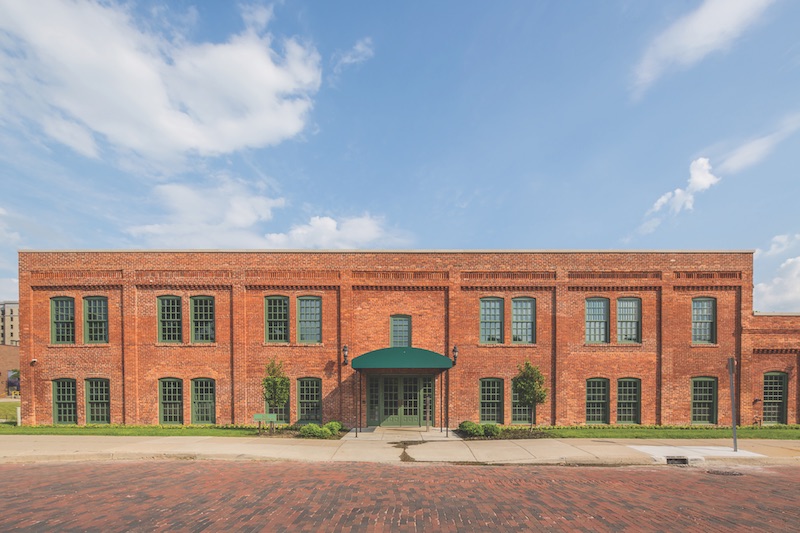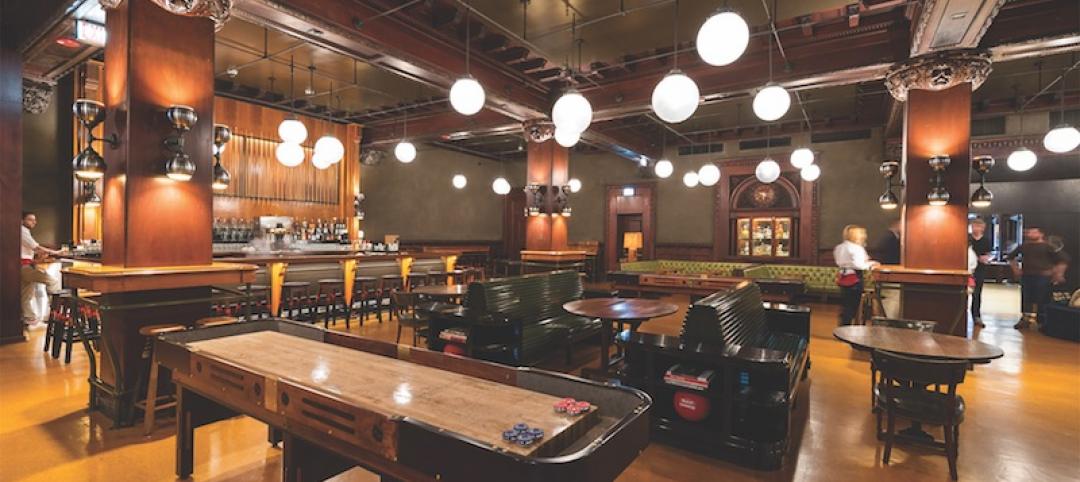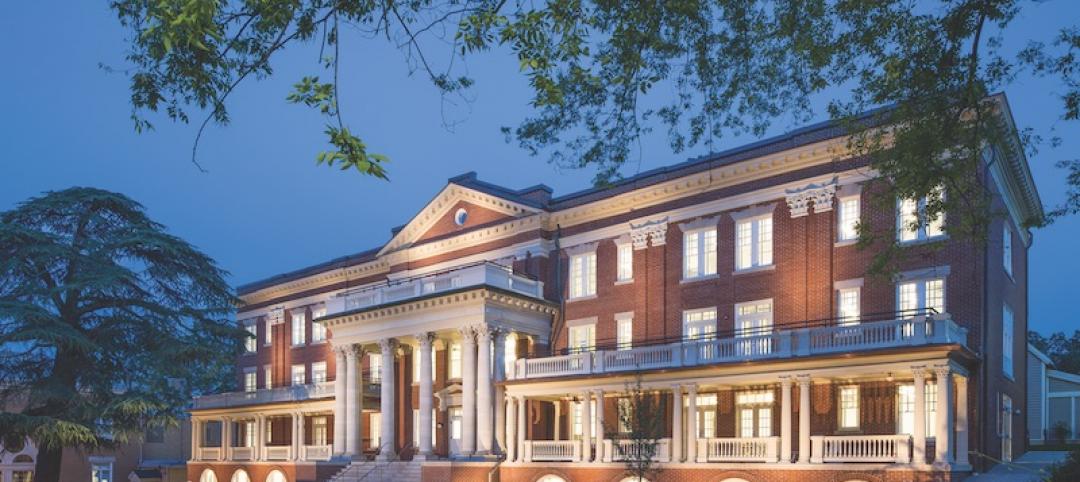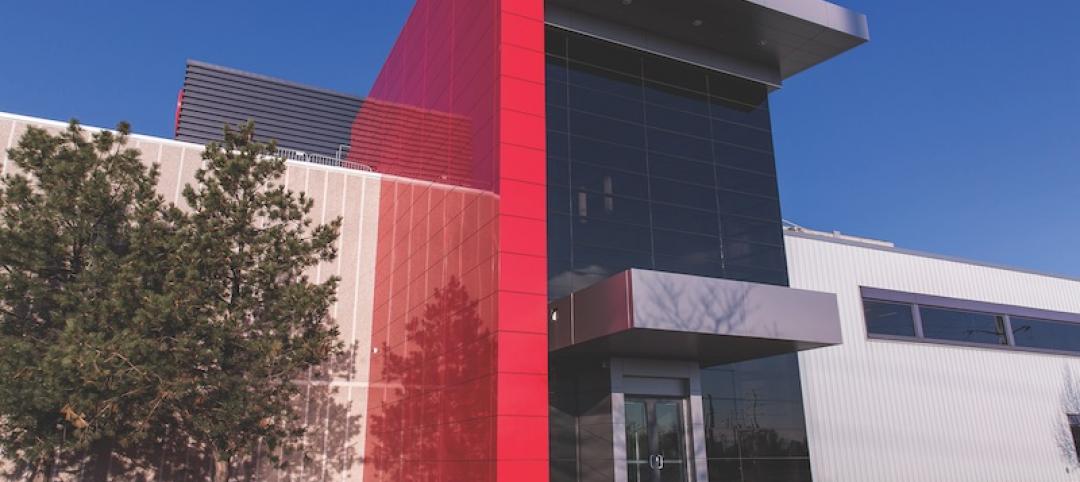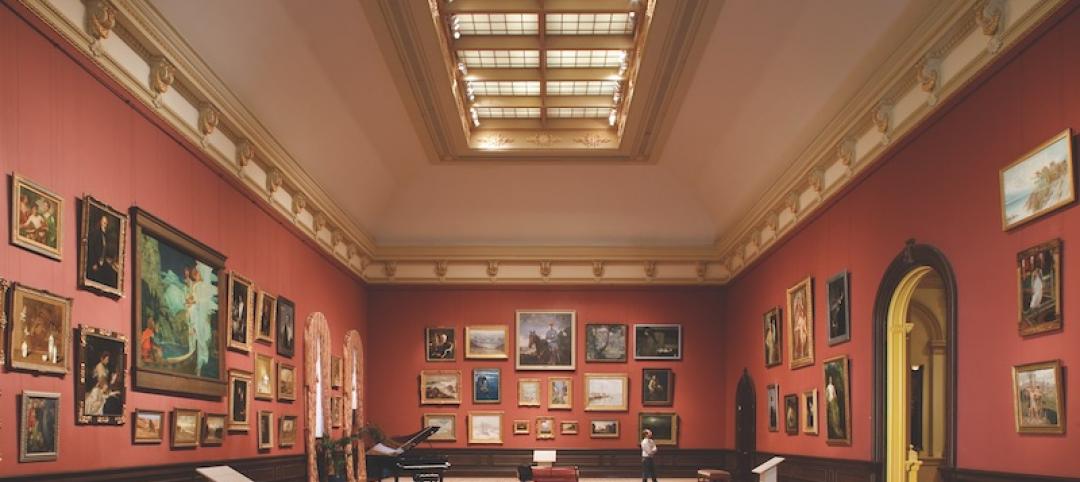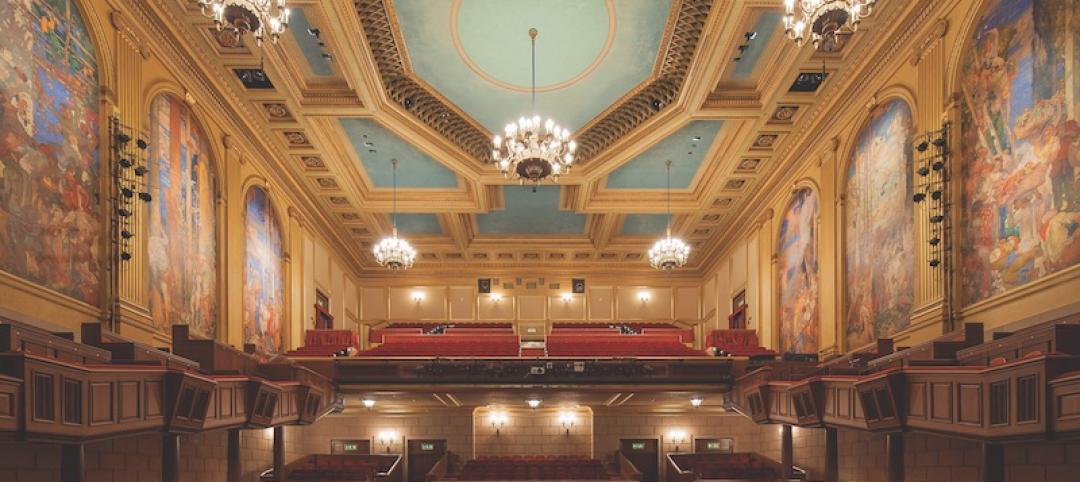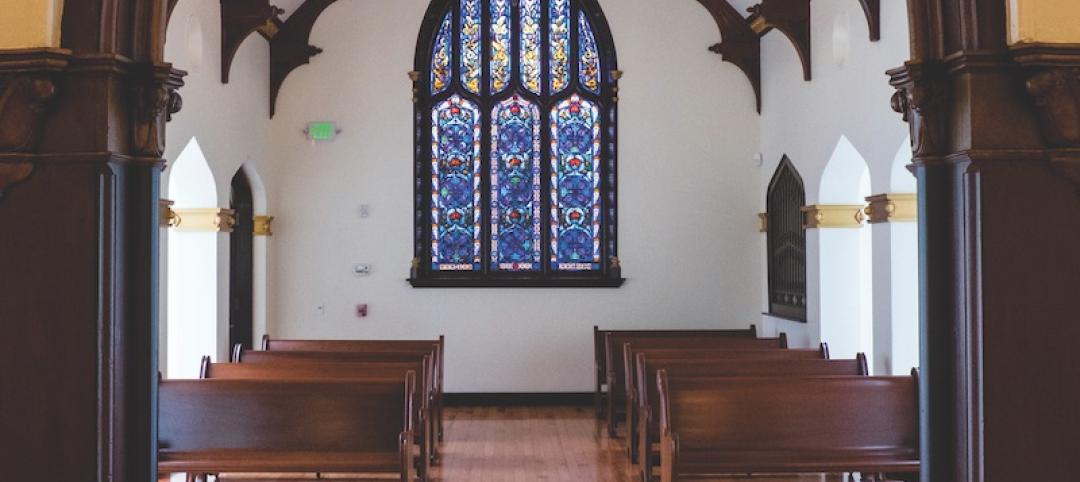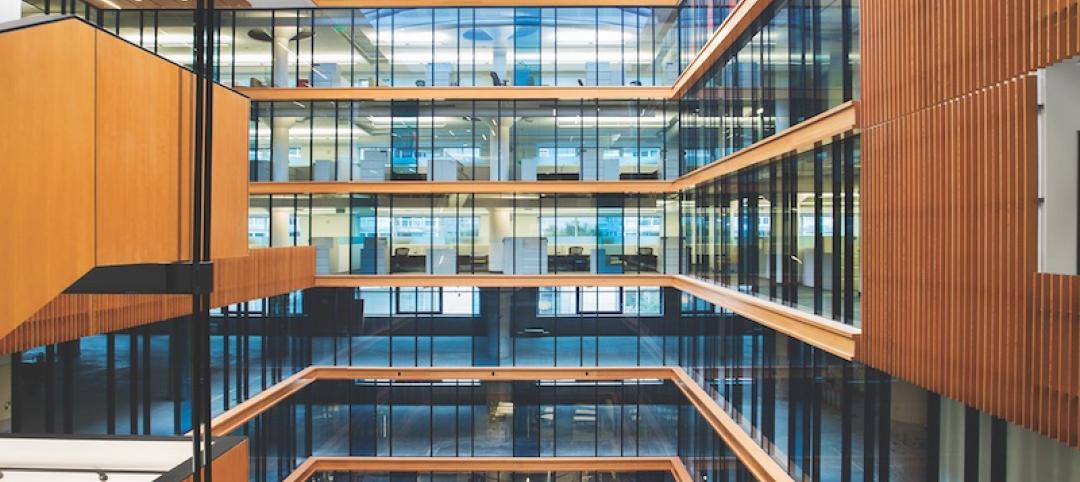When William Crapo “Billy” Durant and Josiah Dallas Dort leased a cotton mill in Flint, Mich., in 1886 for their new carriage-building business, no one could have predicted that, 22 years later, Durant would gain control of Buick Motor Company from its founder, David Dunbar Buick, and form General Motors Company. The old cotton mill, known as Durant-Dort Factory One, is regarded by historians as the place where GM was born.
Over the years, Factory One went through hard times. Four years ago, General Motors formed a collaboration with the Durant-Dort Office Carriage Company Foundation, the Genesee County Historical Society, and Kettering University to save this important piece of Flint and automotive history. GM bought the 30,184-sf building and brought in SmithGroupJJR and Brencal Contractors to turn the building into offices, an archival center, and event space.
By 2014, the National Historic Landmark had seen better days. The grade of the building had fallen 18 inches. Runoff submerged the first floor and eroded the brick masonry bearing walls, causing foundation settling. The project team replaced 17,000 damaged bricks with color-matched substitutes. Five thousand linear feet of mortar, representing 20% of the mortar on the building, was carefully blended to match the color of the existing mixture.
A new roof, new doors, and custom mahogany divided-pane windows were installed. The windows were painted green to match the historic Durant-Dort Carriage Company building across the street.
Portions of the second level dipped 9½ inches. These areas were leveled with a new raised subfloor in which power and data communications were installed. The renovation of the second story now provides a workspace, kitchenette, and meeting areas for GM employees. Factory One also provides space for community groups to rent for events.
The building houses a GM carriage-building and vehicle-manufacturing collection of more than 100,000 documents, some of which date to the late 19th century. To protect the archives from temperature variation and humidity, SmithGroupJJR designed a glass-encased, vapor-sealed room in the center of the building. A mechanical system maintains a temperature of 72° F (plus/minus two degrees) and a relative humidity of 50% (plus/minus 5%).
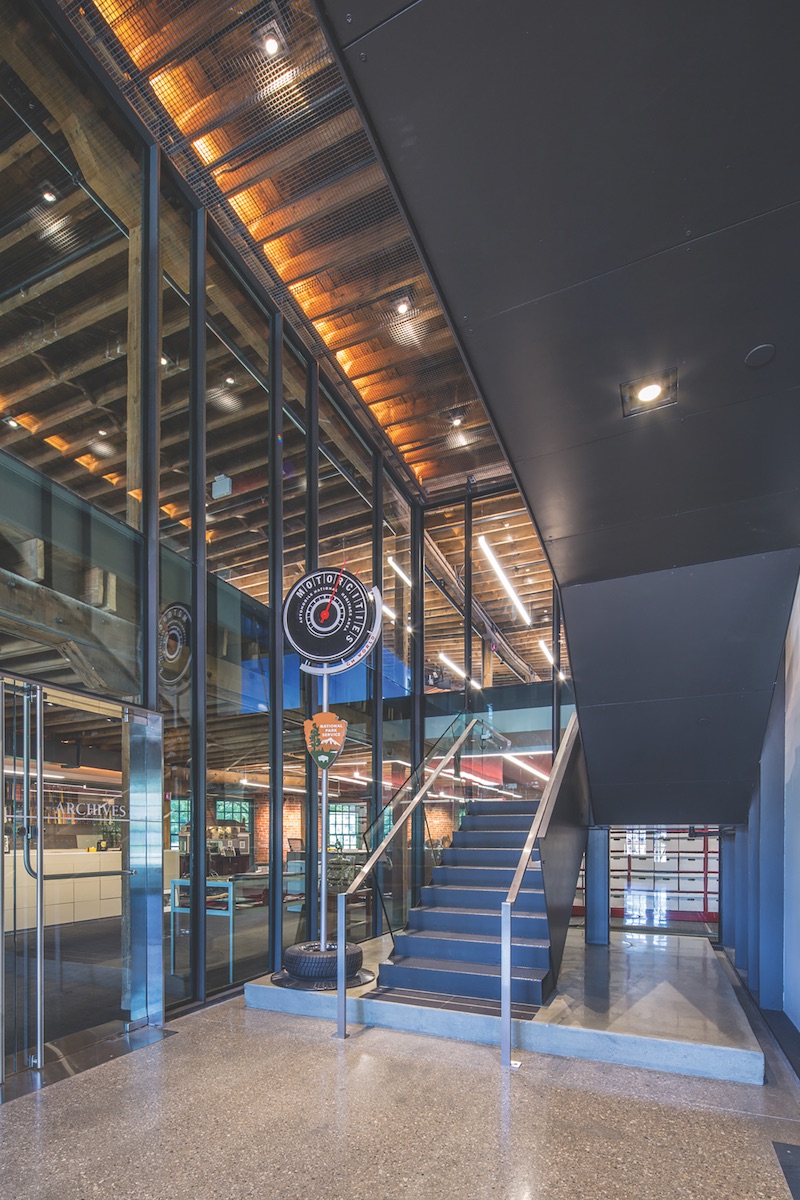 A two-story entry hall was carved out of the existing structure. The grade of the original building was 18 inches below what it was in the 1880s, causing water damage, and had to be remediated. Photo: © Jason Robinson Photography.
A two-story entry hall was carved out of the existing structure. The grade of the original building was 18 inches below what it was in the 1880s, causing water damage, and had to be remediated. Photo: © Jason Robinson Photography.
Project Summary
Silver Award Winner
Building Team: SmithGroupJJR (submitting firm, architect, AOR, interior architect, SE, MEP). Brencal Contractors Inc. (GC).
Details: 30,184 sf. Total cost: $8.7 million. Construction time: August 2014 to May 2017. Delivery method: Design-bid-build.
See all of the 2017 Reconstruction Award winners here
Related Stories
Reconstruction Awards | Nov 16, 2016
BD+C's 2016 Reconstruction Award Winners
St. Patrick’s Cathedral, Lovejoy Wharf, and the Bay Area Metro Center are just a few of the projects recognized as 2016 Reconstruction Award winners.
Reconstruction Awards | Nov 16, 2016
Reconstruction Awards: The Renwick Gallery of The Smithsonian American Art Museum
The renovation restored two long-concealed vaulted ceilings in the second-floor galleries and recreated the original 19th-century window configuration.
Reconstruction Awards | Nov 16, 2016
Reconstruction Awards: Massachusetts Maritime Academy
The two-story “overbuild” employed block and plank construction with drag strut detailing to connect it to the existing building.
Reconstruction Awards | Nov 16, 2016
Reconstruction Awards: The Masonic Temple
The building team suspended a new eighth-floor mezzanine and added 18 9x15-foot windows to the north, south, and west façades.
Reconstruction Awards | Nov 16, 2016
Reconstruction Awards: San Francisco War Memorial Veterans Building
The building team used a system of rocking concrete shear walls, which eliminated the need for deep foundations and reduced the shear force on each wall.
Reconstruction Awards | Nov 16, 2016
Reconstruction Awards: Arc at Old Colony
The Arc at Old Colony's vintage floor plans, voluminous lobby, and myriad elevators were perfect for redevelopment as a historically charming residential building.
Reconstruction Awards | Nov 16, 2016
Reconstruction Awards: Noble Chapel
In May 2013 the 124-year-old Noble Chapel, suffered a three-alarm fire that almost completely destroyed its 1937 crematorium.
Reconstruction Awards | Nov 16, 2016
Reconstruction Awards: Bay Area Metro Center
The structure’s 60,000-sf floor plates made the interior dark and foreboding, and BAHA wanted to improve working conditions for its employees and tenants.


